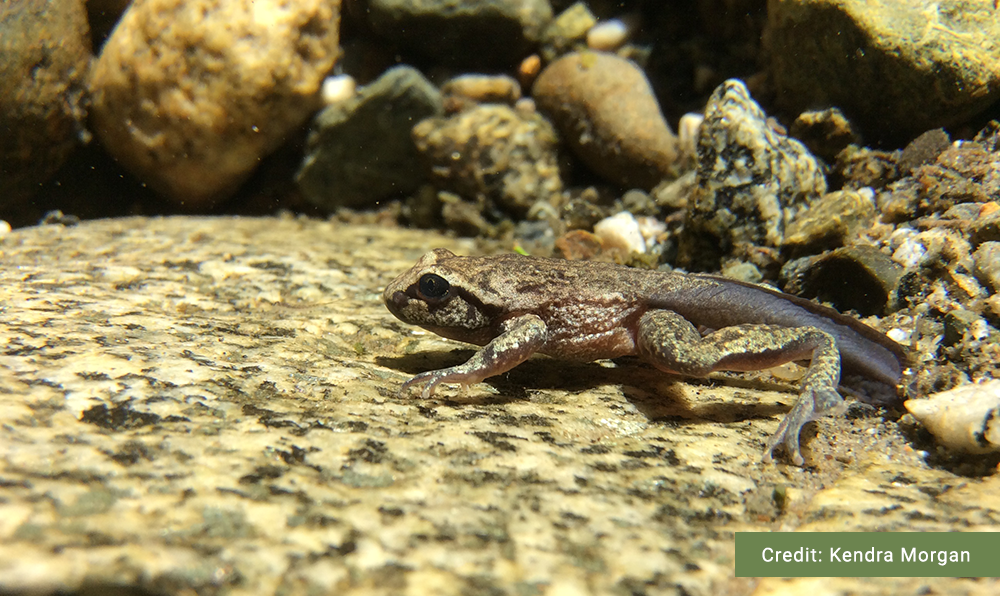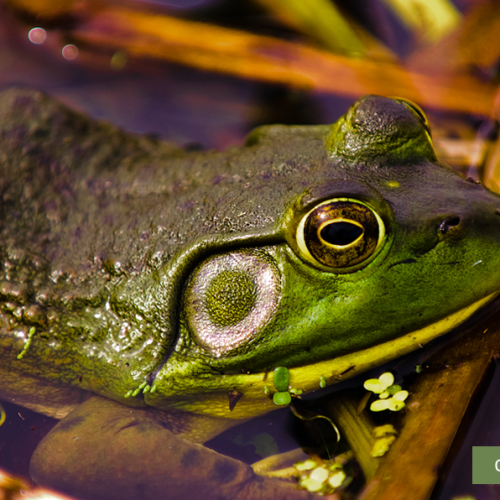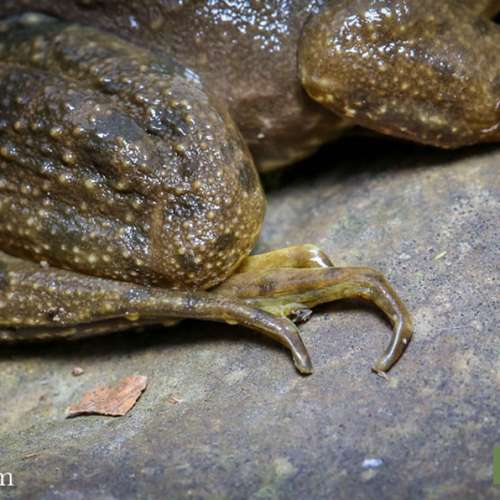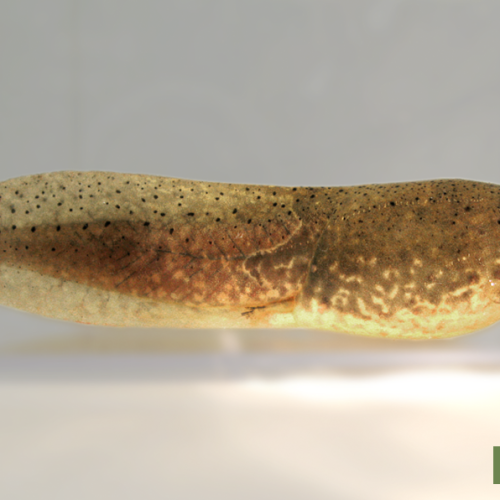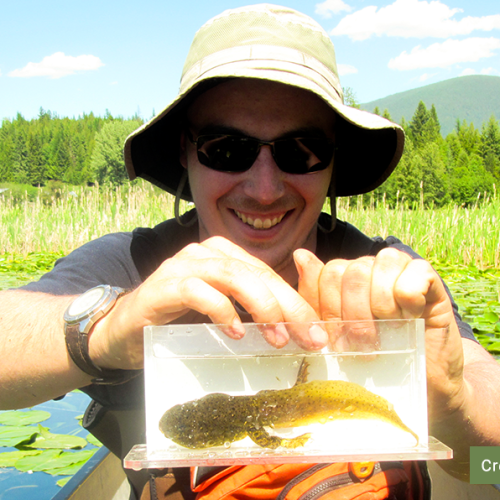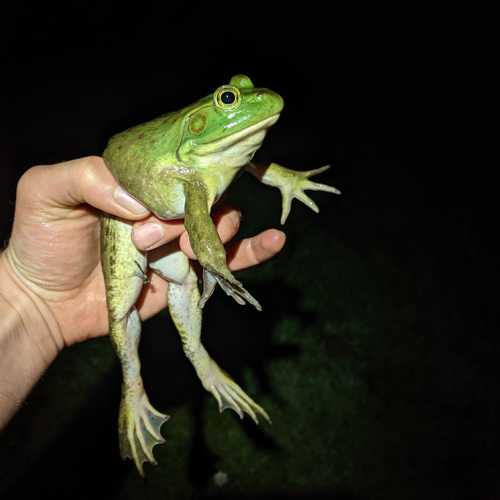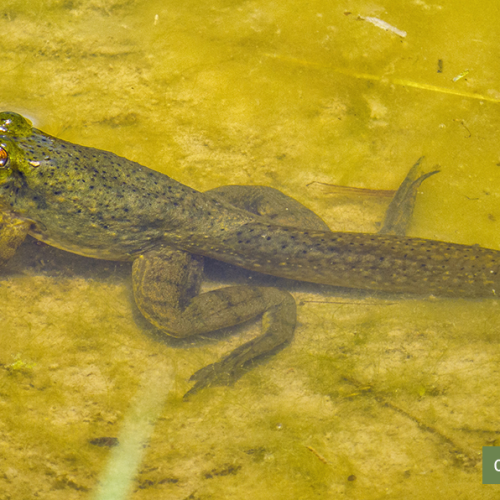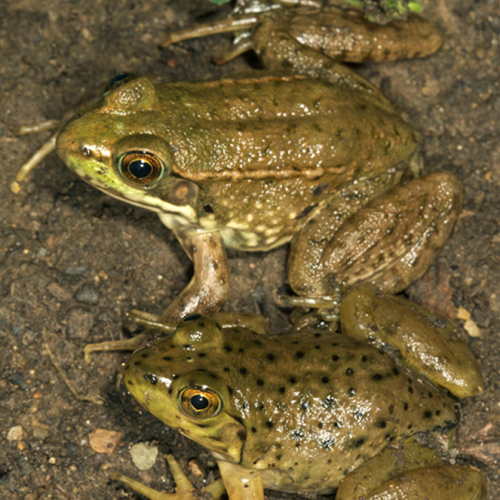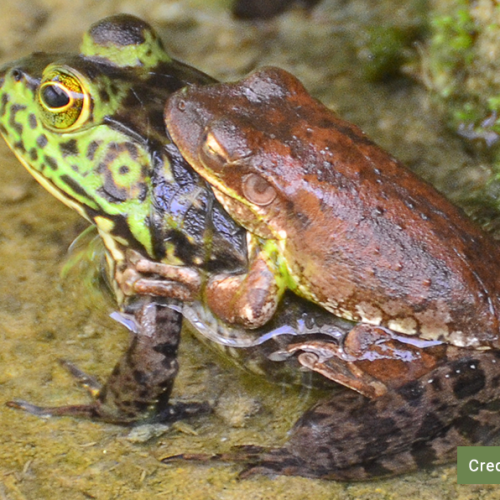Credit: Diana Robinson
American Bullfrog
Lithobates catesbeianus
Description
Other names: Bullfrog, Rana catesbeianus
Listen to the Indigenous words for “frog” here!
American Bullfrog Call
The call of the American Bullfrog is deep and resonant, often described as a bass, growly “jug-o-rum”. A full chorus can be heard from half a kilometer away.

American Bullfrog Call
The call of the American Bullfrog is deep and resonant, often described as a bass, growly “jug-o-rum”. A full chorus can be heard from half a kilometer away.
Similar Species
Green Frogs, another introduced species in British Columbia, also have a large, obvious tympanum but are differentiated from Bullfrogs by their dorsolateral foldsDefinition:Tooltip content (raised skin down their back).
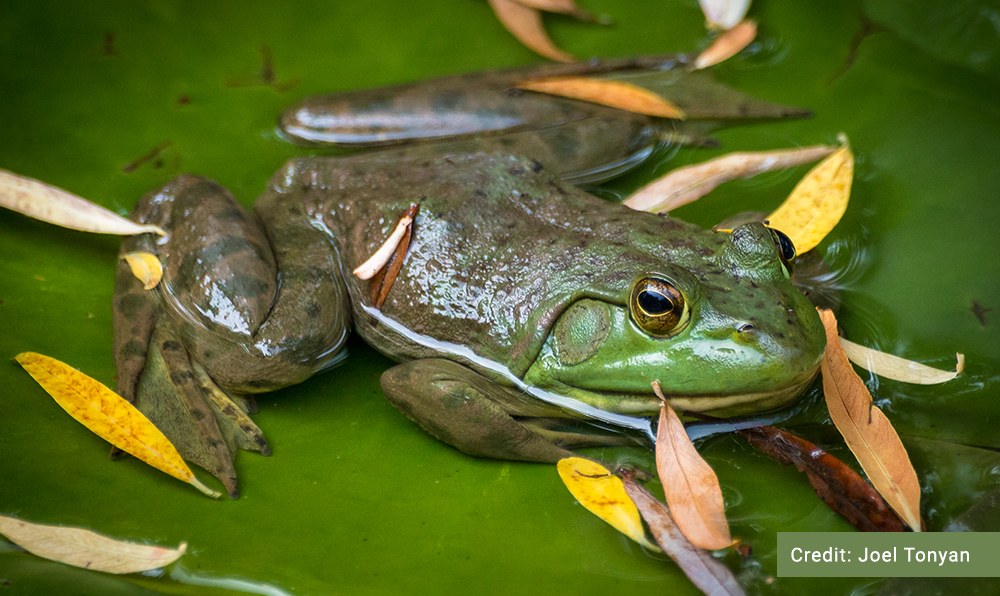
American Bullfrog

Green Frog
Distribution
Habitat

Reproduction
The breeding season for American Bullfrogs is later than for most other frog species, usually occurring from mid-June to late July on warm, rainy nights. Males will call to attract females and, if a suitable mate is found, will fertilize eggs externally as they are laid by grasping onto her back in amplexusDefinition:Tooltip content. Females will lay up to 20,000 eggs in shallow water with lots of vegetation and the eggs will spread out to form sheets near the surface. The eggs are black and develop very quickly, hatching in less than a week. Females can produce 2 clutches per year. In most areas, tadpoles will hibernate for at least one winter before metamorphosing, but in warmer climates they may metamorphose in less than 6 months. Bullfrogs in colder climates or areas with short growing seasons may take up to 5 years to reach sexual maturity and can live for up to 10 years.
Diet
Conservation Status
Global: G5 (2017)
Provincial: SNA
BC List: Exotic
Learn more about conservation status rankings here
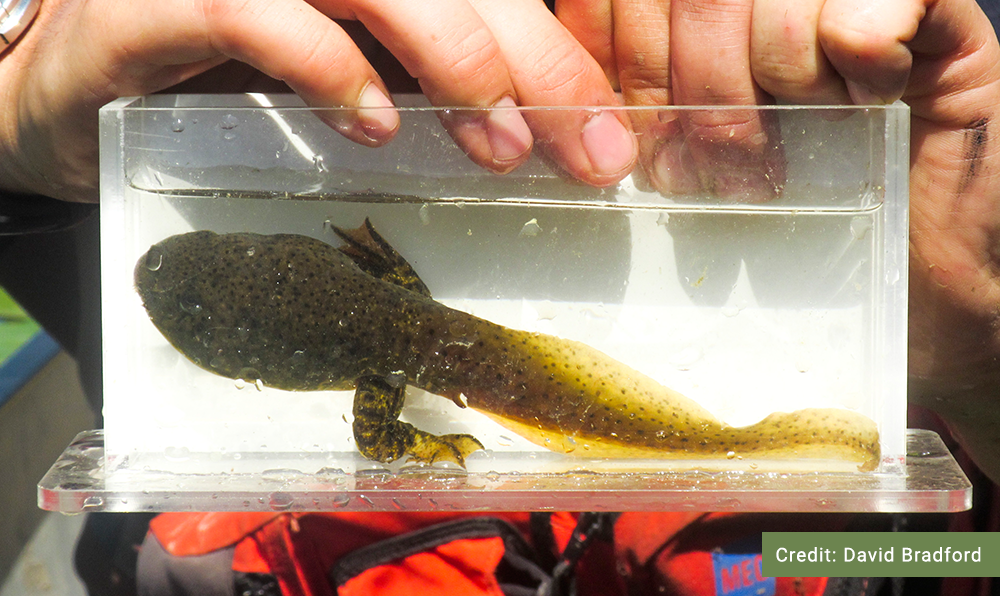
Threats
Did You Know?
Fact #1
Fact #2
Fact #3
Species Account Author: Marcus Atkins
Available:https://a100.gov.bc.ca/pub/eswp/ (accessed May 18, 2021).
Garner, T. W., Perkins, M. W., Govindarajulu, P., Seglie, D., Walker, S., Cunningham, A. A., & Fisher, M. C. (2006). The emerging amphibian pathogen Batrachochytrium dendrobatidis globally infects introduced populations of the North American bullfrog, Rana catesbeiana. Biology letters, 2(3), 455-459.
Govindarajulu, P. (2004). Introduced bullfrogs (Rana catesbeiana) in British Columbia: impacts on native Pacific treefrogs (Hyla regilla) and red-legged frogs (Rana aurora).
Matsuda, Brent, David M. Green, and Patrick T. Gregory. 2006. Amphibians and Reptiles of British Columbia. Handbook. Royal BC Museum, Victoria.
Ovaska, K, S. Lennart, C Engelstoft, L. Matthias, E. Wind and J. MacGarvie. 2004. Best Management Practices for Amphibians and Reptiles in Urban and Rural Environments in British Columbia. Ministry of Water Land and Air Protection, Ecosystems Standards and Planning, Biodiversity Branch
http://a100.gov.bc.ca/pub/eirs/finishDownloadDocument.do?subdocumentId=667
https://a100.gov.bc.ca/pub/eswp/search.do
https://www.naturewatch.ca/frogwatch/bullfrog/
http://www.canadianherpetology.ca/species/species_page.html?cname=American%20Bullfrog

